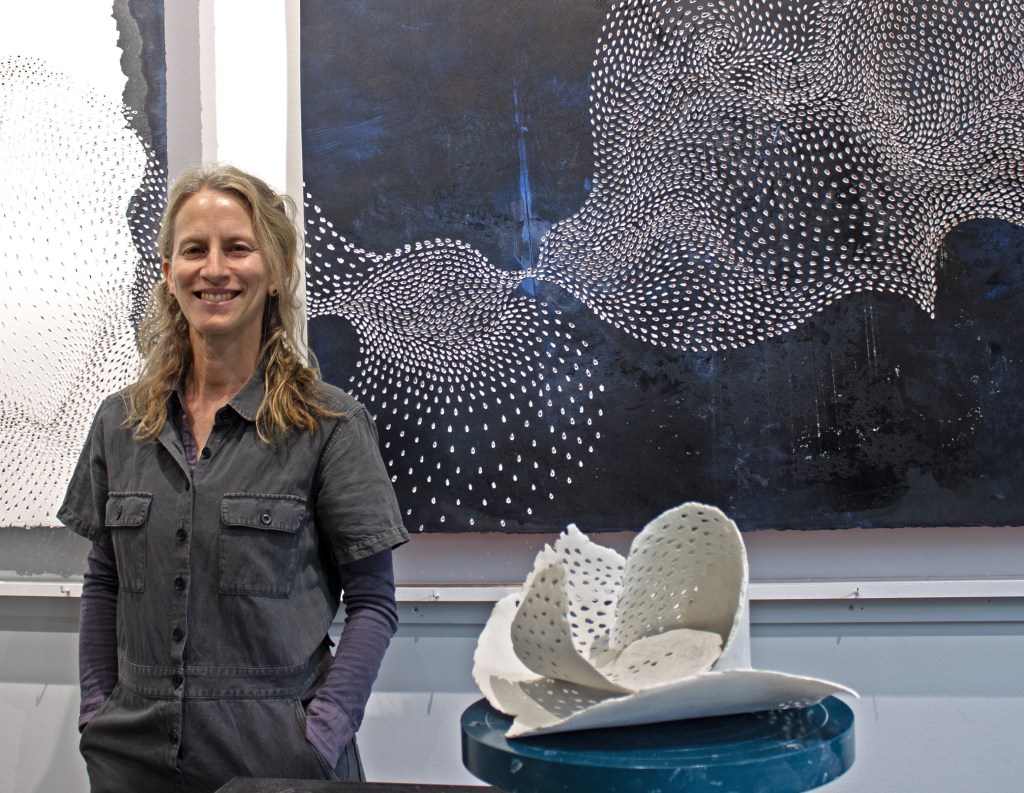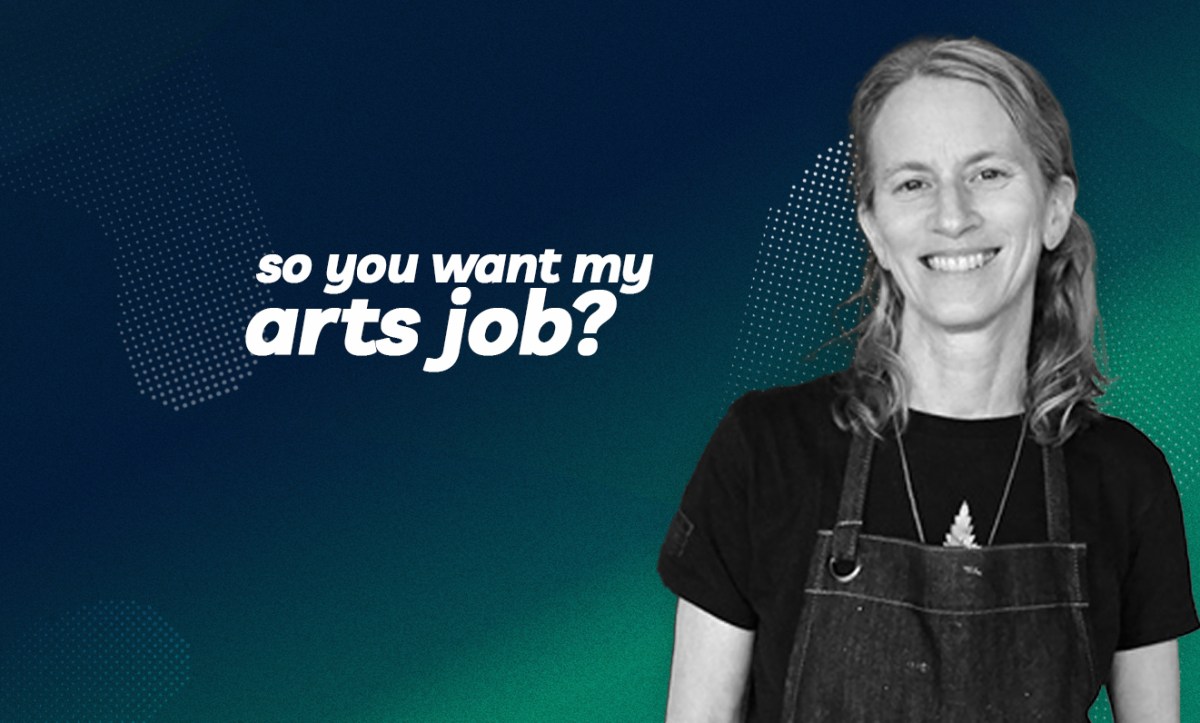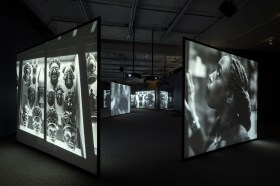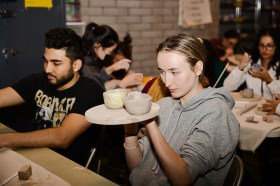Melinda Schawel is a US-born, Australian-based artist who works predominantly in paper, exploring its limitless possibilities through textures, markings, colour and even sculptural forms.
Originally drawn towards documentary filmmaking, Schawel reconnected with her love of the visual arts while living in Japan, and is inspired by the concept of Akari, meaning brightness, clarity and positivity. She describes her practice as ultimately a transfer of energy, from the artist, onto the paper and then out to the viewers.
Weightless is the title of her upcoming solo exhibition in Melbourne (Australia), featuring large-scale, translucent and lace-like paper works alongside sculptures made from paper porcelain clay.
Schawel was named as a finalist in the WAMA Art Prize for Works on Paper in 2023 and Adelaide Perry Drawing Prize in 2020, after taking out the People’s Choice Award in 2018, among many other accolades. Her works are held in the collections of the National Gallery of Australia (NGA), Artbank, Geelong Regional Gallery, Royal Museum of Fine Art in Antwerp and more.
She shares with ArtsHub the intricate process behind her practice, her sources of inspiration and other artists who are channeling artistic innovation through the medium of paper.
How would you describe what you do?
You’d think by now I’d have a simple answer to this question. Truth is, it is difficult to describe because my approach to this traditional medium is fairly unconventional. Paper has been around for 2000 years; most people on the planet have had some connection with it, but when mentioned in the same sentence as power tools, it tends to cause some confusion!
I use French and Italian hot press (smooth) watercolour papers which are 640gsm – double the typical weight of art paper. I use a scalpel to tear paper off the surface, one piece at a time, and an engraving tool with different attachments to drill/carve into and through the paper. This in turn creates shadows and depth, and the torn surface provides the perfect contrast to the smoothness around it. It is also the perfect receptacle for drawing ink, which I pour and brush on in pure and diluted forms. The aim is to explore the potential of only a few key ingredients to create a boundless number of compositions.
It is an incredibly labour-intensive way of working that is essentially an exchange of energy. I put the energy in (it is literally a whole body experience) and that energy transfers out of the work and hopefully into whoever sees it. Distraction often feels like the bane of our modern existence and my approach harnesses the opposite; it requires periods of absolute focus and a participant on the other end to be truly successful.
How did you get started in your career and your practice working with paper?
In 1993, I graduated with a double major in Fine Art and Communication from the University of California Santa Barbara and, although initially leaning towards documentary filmmaking, I rediscovered the magic of visual art while living in Japan for a couple of years after graduation.
I returned to Melbourne in 1995 and completed an Honours degree in printmaking at RMIT and, around the same time, was fortunate enough to land a job at Port Jackson Press, Australia’s oldest publisher of original prints. Learning the ropes of an art business from the ground up and developing a deeper appreciation for the egalitarian nature of limited editions (on paper) set the stage for what was to come. Access to many artists’ professional practices throughout this time was also a game changer.
By 1999 I had a few exhibitions and art commissions under my belt, and felt it was time to leave that position to discover whether or not a career as a full-time artist was possible. Since then I have experimented with different media, but paper has always been my main passion.
What’s an average day or week like?
Most artists will tell you, there is no average day or week despite our best efforts. Life still gets in the way but, on a good day, I get into the studio at 9am after coffee, dog-walking and admin, and just get to work.
Most of my thinking time happens while I’m outside the studio walking, but I rarely take a sketch book and, more often than not, take photos and record sounds instead. The documentarian in me is still very present!
I usually finish the day at 6pm when my taxi/cooking services are required, but will return to the studio for a few more hours after dinner if an exhibition deadline is looming.
Is there a common misconception about being a paper artist?
The term “paper artist” is actually a bit of a misnomer; it gives the impression that paper is my sole medium, but I also work with metal, wood and clay.
It would be fair to say though that for me and others who work predominately with paper, it is not just a backdrop for drawing or printmaking, but rather a dynamic medium in itself. The fact that it can be sculpted, folded, torn, perforated, glued and burnt, highlights its versatility and strongly influences my approach to other media.

What is one thing you wish you knew before starting out?
I don’t know that I would’ve taken any specific advice, having always preferred lived experience and possibly learning the hard way. It’s also a bit of a chicken and egg argument. With the advantage of hindsight so much feels like luck – right time, right place sort of thing – but without the hard work behind the scenes, I would’ve never been prepared for the opportunities that came my way.
Regardless, I do think it’s healthy to keep questioning why you do what you do, even if there are no clear answers at the time.
If you were interviewing someone for your profession, what skills and qualities would you look for?
Work ethic, curiosity, resilience and some natural talent (in that order).
What’s the biggest topic/trend happening in your field at the moment?
Contemporary art has become more and more interdisciplinary and will continue to reflect broader trends in society. Most artists choose the best medium to express their current practice at a particular moment in time, so it is difficult to pinpoint what is happening in the world of paper specifically.
Noriko Ambe’s topographic paper sculptures and Matthew Shlian’s geometric paper designs are awe-inspiring. Bridget Hillebrand’s large-scale linocut paper installations and Lindy Lee’s use of ink and fire on paper also illustrate the infinite potential of this medium.
The impact of AI on art is fascinating and a growing concern for some, but I also believe in the power of creativity and that, with any technological change, artists will adapt accordingly. Questions about authenticity will continue to surface, and so will a renewed appreciation for human engagement and works of art that could’ve only been made by hand.





